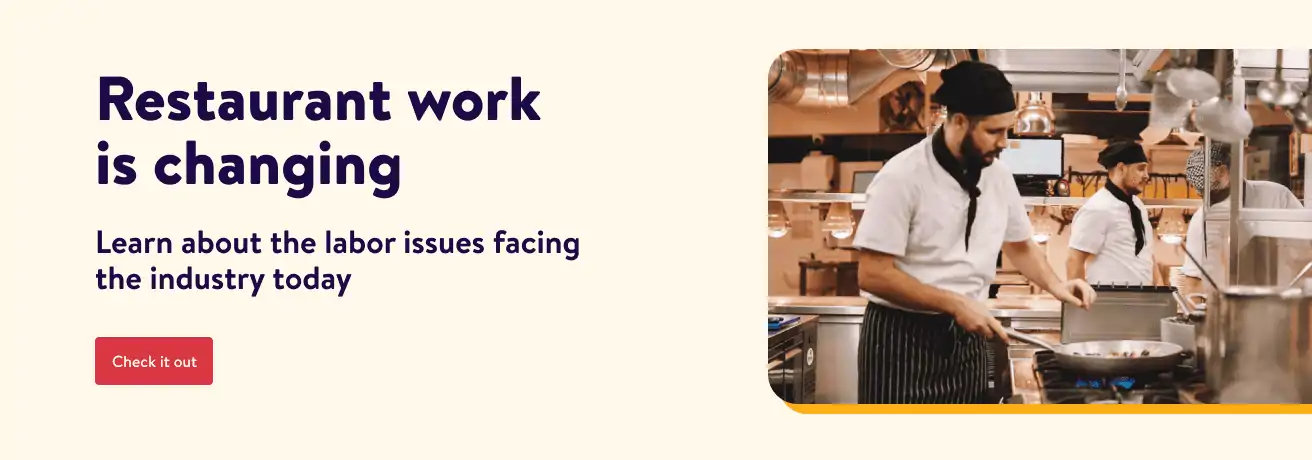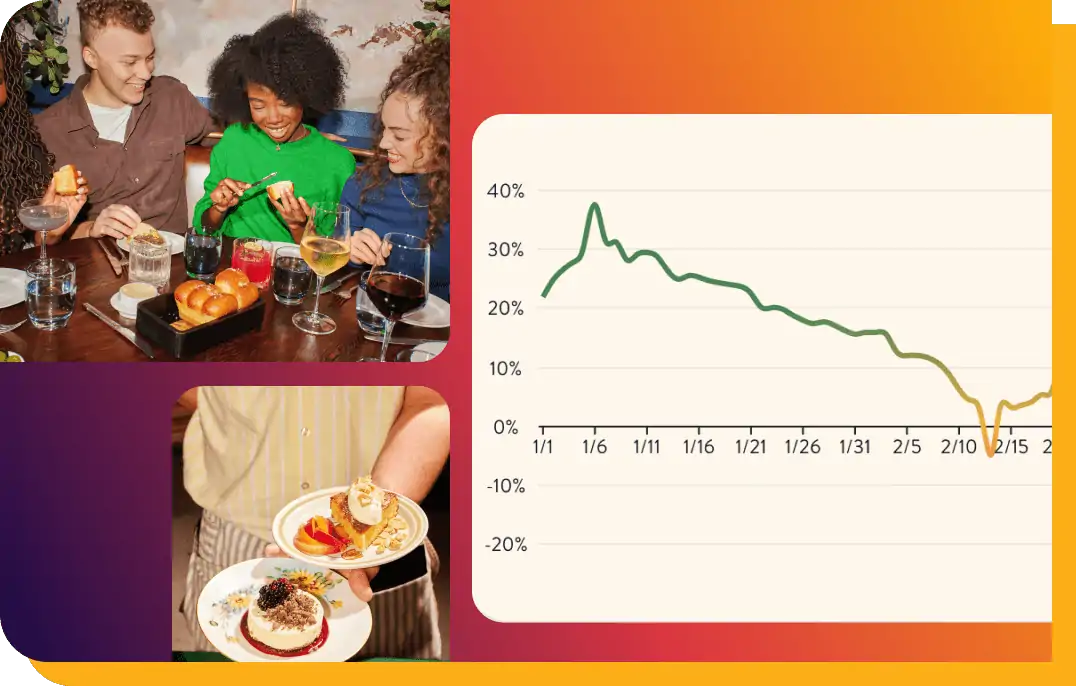In a survey of restaurant workers, 76% said that they’d leave a restaurant because of low wages and 78% said the most important thing a restaurant can do to encourage them to stay is paying a “full, stable, livable” wage.
Rising wages reflect this pressure. Minimum wage increases have been happening around the country. The average hourly rate for US restaurant workers increased by 20% between 2020 and 2022, rising from $16.65 to $18.71.
Considering the macroeconomic pressures of inflation, a possible coming recession, and an ongoing labor shortage, the question of labor costs has never been more urgent for restaurateurs. Many roles in restaurants have traditionally paid minimum wage, but in many cities potential employees now command higher wages.
Here’s a refresher on what the minimum wage looks like today and tips on how to set competitive wages that will attract and retain talent.

What is the minimum wage for restaurant workers?
The minimum wage for restaurant workers depends on the way they’re paid. Typically, restaurant managers, chefs, and certain other senior full-time team members earn a salary that exceeds minimum wage.
The question of minimum wage pertains to roles including waiters, line cooks, bussers, hosts, and bartenders. But even these positions are not all paid the same way. Some fall under tipped minimum wage laws and others fall under the regular state minimum wage law. In all cases, the minimum wage varies by state so it’s important to know the laws in your area. (Learn more about hourly wages for tipped employees by state.)
What is the minimum wage for waiters and other tipped workers?
Any workers who receive tips can be subject to the tipped minimum wage rate for their state. This can be as little as $2.13 per hour. The reason for these lower wages is that tipped employees make most of their money from tips. For servers in busy restaurants, the hourly wage part of their income can be a tiny fraction of their pay.
Tipped minimum wage isn’t straightforward in every state. In some states, restaurants need to pay tipped team members a minimum cash wage above the minimum wage required under the federal Fair Labor Standards Act. Many states and cities set this amount at $30.
There are other quirks depending on the individual state department of labor. In Wisconsin, the lowest tipped minimum wage applies to workers under the age of 20 only. In Nevada, starting in July 2023, the minimum wage will depend on whether or not an employee receives or is offered qualifying health insurance.
The following states have no state-level minimum wages laws but must conform to the Federal Fair Labor Standards Act:
- Alabama
- Louisiana
- Mississippi
- South Carolina
- Tennessee

What is the minimum wage for cooks and other hourly workers?
Like a tipped minimum wage, the non-tipped minimum wage varies from state to state. It can go no lower than the federal minimum wage of $7.25 per hour. In the current hiring environment, restaurants paying the federal minimum often struggle to find staff.
The minimum wage is increasing in many areas. In parts of Washington State, the minimum wage is now $19.06 an hour. Minimum wages of $15 plus are becoming more and more common.
No-tipping movement
Pre-pandemic, the trend of no-tip restaurants was gaining steam. In recent years, this movement has lost momentum amid the many other challenges the restaurant business is facing. Still, some restaurants have eliminated gratuities with the goal of paying all restaurant employees, front and back of house, an equitable living wage.
It can certainly help level the playing between servers, who can earn hundreds of dollars during a busy Saturday night, and line cooks who earn the same low wage day in and day out.
There are certainly challenges to moving away from tipped workers and the tipped minimum wage model. Taking the leap can make it difficult to attract and retain servers, for example. It can also increase labor costs considerably. Still, it’s an idea worth considering in the future as the restaurant industry moves into the future.

How to set a competitive wage
When you set hourly pay rates and salaries, it’s important to get it right. Paying more than you can afford is unsustainable and can take a toll on the business. But trying to squeak by paying minimum wage, or as little as you can, will mean you will never attract the top talent that is essential to a restaurant’s success. And when you do find a great team member, if wages aren’t competitive they will go elsewhere for those higher wages before long.
Do your research to find out what competitive pay means in your area. Payscale is a great source of information, with regional information on average salaries and trends. Look at job sites such as Culinary Agents and talk to your network about what local talent considers a good wage.
Remember, it’s costly to replace employees. You need to get by without them until they can be replaced and then you need to invest in training a new hire. Competitive wages can actually save a restaurant money over time by reducing turnover.
Only you can decide if minimum wage can work for your specific restaurant, region, and pool of talent. You may find paying more is worth the cost when it comes to having a more engaged team that’s likely to stick around.





